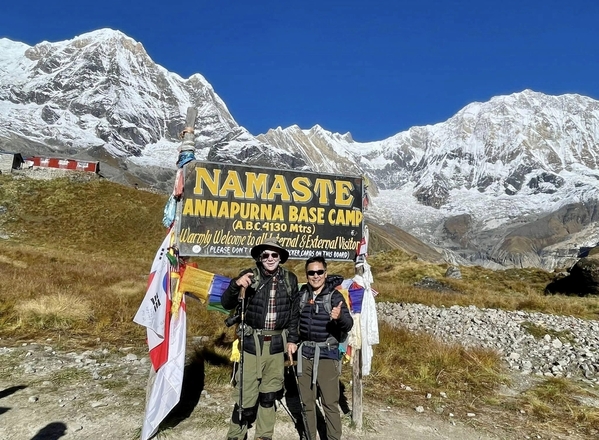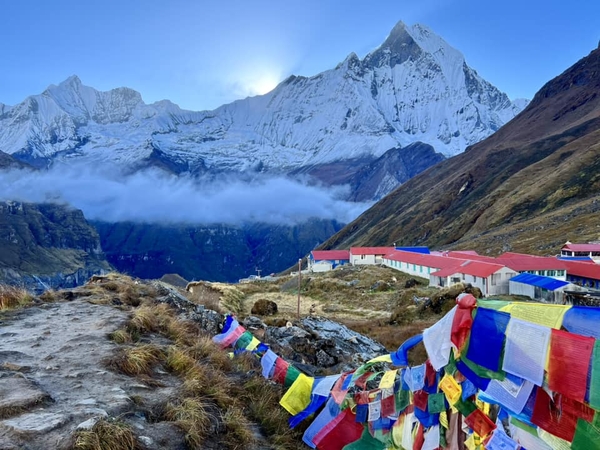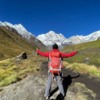(Sponsored content)
Ensuring safety during the Annapurna Base Camp trek is paramount for trekkers and hikers throughout the year, with particular emphasis on winter and monsoon seasons.
Journey to Annapurna Base camp, renowned for its scenic beauty, encompasses charming mountain villages such as Ghandruk, Ghorepani, and Chomrong, adorned with lush fields and rolling hills.
The ABC trail gently curves through a terrain of gentle slopes, offering a relatively effortless trekking adventure.
The Annapurna Base Camp trek, while captivating, presents its own set of challenges and safety concerns that necessitate a comprehensive understanding of safe trekking practices.
Navigating through this picturesque journey requires you to be well-prepared and mindful of potential risks, ensuring a memorable and secure exploration of the stunning Himalayan landscapes.
Is it safe to go to Annapurna base camp?
Trekking to Annapurna Base Camp is generally safe, and the safety aspect is dependent on various factors.
For those who are in good physical condition, the trek poses no significant safety concerns.
The ABC route is adorned with comfortable hotels and well-equipped teahouses, providing excellent services and a cozy haven for you to rest.
The key to a safe journey lies in proper preparation and readiness.
With adequate preparation, including physical fitness, appropriate gear, and an awareness of the trek's challenges, individuals can confidently and safely trek to the Annapurna Base Camp, enjoying the breathtaking landscapes and hospitality along the way.

How hard is Annapurna base camp trek?
The Annapurna Base Camp trek is considered relatively easier when compared to the Everest Base Camp trek.
This is primarily because the journey to Annapurna Base Camp entails shorter trekking days, with maximum elevations reaching 4,130m/13,550 feet.
The air at these altitudes contains more oxygen compared to the Everest region, making it a bit more breathable.
The Annapurna base camp hike commences at an altitude of 800m/2,625 feet, allowing ample time for acclimatization, a crucial factor for high-altitude treks.
Although the Annapurna Base Camp trek may be perceived as easier than the Mount Everest base camp trek, the required fitness level for both remains fairly similar.
You don't need technical expertise, rock climbing, or mountaineering skills, as the ABC trek in Nepal primarily involves long hikes at lower elevations with numerous uphill and downhill walks.
The standard duration for the Mount Annapurna Base Camp trek is around 11 days (including arrival and departure), but if you are pressed for time, a shorter 7-day route is available.
What is the best time for ABC trekking in terms of safety?
The best times for a safe trek to Annapurna Base Camp are during the Spring Season (March, April, May, June) and the Autumn Season (End of September, October, November).
These periods offer moderate temperatures, with pleasantly warm days and cool mornings and evenings, creating an ideal climate for trekking.
The weather during these seasons is clear and precise, striking a balance that avoids extremes of heat or cold.
Most importantly, the dry conditions in spring and autumn contribute to non-slippery trails, enhancing safety compared to the winter and monsoon seasons.
Additionally, the reduced likelihood of avalanches and landslides during spring and autumn further contributes to the safety of the trek.
Choosing these optimal seasons ensures a safer and more enjoyable Annapurna Base Camp trekking experience.

How to safely trek to Annapurna base camp?
Understand Altitude Sickness and Prioritize Acclimatization:
Familiarize yourself with altitude sickness and recognize its symptoms. Prioritize gradual ascent to allow your body to acclimatize to higher altitudes.
Hydration is the Key:
Stay well-hydrated throughout the trek, as proper water intake aids in acclimatization.
Be Aware of Altitude Sickness Symptoms:
Stay vigilant and be aware of potential symptoms of altitude sickness, including headaches, dizziness, and nausea.
Descend if Necessary:
Don't hesitate to descend if you experience severe symptoms of altitude sickness. Safety comes first.
Choose a Reputable Trekking Company:
Choose a well-established and registered trekking company, ensuring they are authorized and responsible. Reputable agencies provide experienced guides with knowledge of trekking routes, first aid, and Acute Mountain Sickness.
Select the Best Time for ABC Trek:
Plan your trek during the optimal seasons, preferably in spring (March/April/May/June) or autumn (End of September/October/November). Choose to trek during favorable seasons to minimize the risk of climatic mishaps.
Stay Informed about Weather Conditions:
The weather in the Himalayan region can be unpredictable, so keep abreast of weather records.
In conclusion, while the Annapurna Base Camp trek isn't excessively strenuous, mental preparedness is crucial for immersing oneself in the captivating world of mountains, rivers, and diverse landscapes over a few weeks.
With the right preparation, a spirit of adventure, and an appreciation for the awe-inspiring natural beauty, the trek to Annapurna Base Camp emerges as a safe and unforgettable journey that has captivated individuals of various backgrounds and abilities.
The Journey to Annapurna base camp offers an opportunity to create lasting memories amidst the stunning Himalayan scenery.




Comments (0)